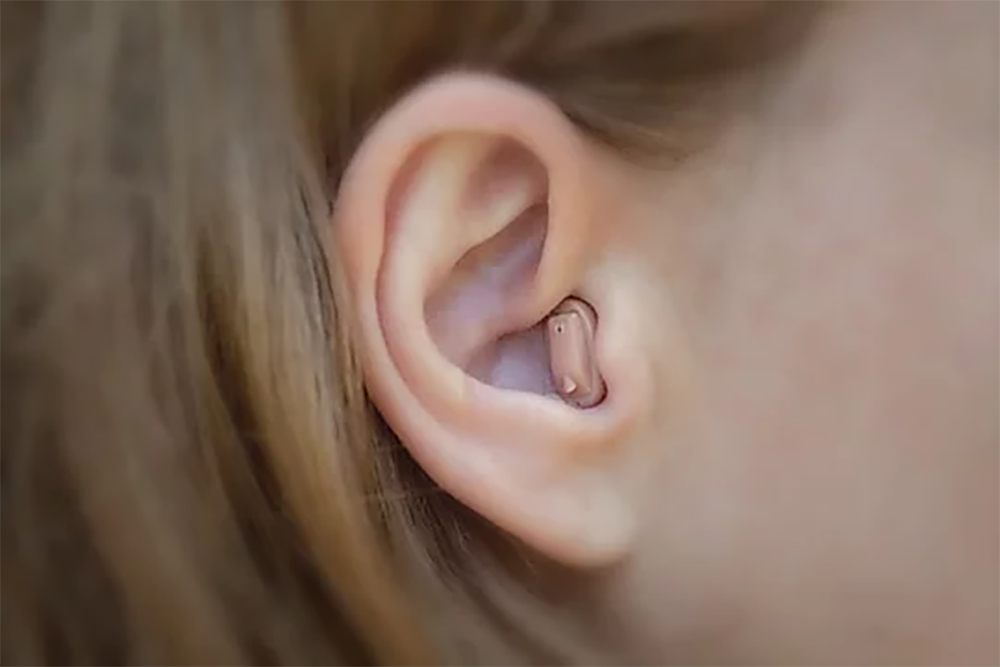What to Know About Hearing Aid
Hearing aids are designed to support individuals experiencing hearing loss by amplifying sounds and improving clarity. They come in different styles and technologies, each suited for varying needs. Learning how they function can guide more informed decisions.

Hearing loss affects approximately 48 million Americans, yet many delay seeking treatment. Hearing aids serve as valuable tools that can significantly improve quality of life by enhancing sound perception and facilitating better communication. Modern hearing devices offer far more capabilities than their predecessors, with advanced features designed to address various hearing challenges across different environments and situations.
Affordable Hearing Aids and Available Options
The hearing aid market has expanded considerably in recent years, making devices more accessible to consumers at various price points. Traditional hearing aids prescribed by audiologists typically range from $1,000 to $4,000 per ear, depending on technology level and features. However, more affordable alternatives have emerged to address cost barriers.
Recent innovations include direct-to-consumer models and basic amplification devices that can cost between $200 and $1,000 per pair. These options often provide fewer customization features but may be sufficient for individuals with mild to moderate hearing loss. Some manufacturers offer financing plans, and certain insurance policies provide partial coverage for hearing devices.
Nonprofit organizations and government programs also exist to help qualifying individuals access hearing technology at reduced costs. Veterans may receive hearing aids through VA benefits, while some states offer assistance programs for seniors and low-income residents.
Digital Hearing Devices and Assistive Listening Tools
Digital technology has revolutionized hearing assistance. Unlike analog predecessors, digital hearing aids use computer chips to process sound signals, allowing for precise customization to an individual’s specific hearing profile. These devices can be programmed to amplify certain frequencies while suppressing others, resulting in clearer sound quality.
Modern digital hearing aids often include features such as directional microphones that focus on sounds coming from in front of the wearer while reducing background noise. Noise reduction algorithms help filter out unwanted environmental sounds, making conversations easier to follow in challenging acoustic environments.
Beyond traditional hearing aids, assistive listening devices (ALDs) provide additional support in specific situations. These include TV amplifiers, telephone amplifiers, and personal FM systems that transmit sound directly to the hearing aid. Many digital hearing aids now offer Bluetooth connectivity, allowing direct streaming from smartphones, televisions, and other electronic devices.
Over the Counter Hearing Aids Explained
In 2022, the FDA established a new category of over-the-counter (OTC) hearing aids for adults with perceived mild to moderate hearing loss. This regulatory change allows consumers to purchase certain hearing devices without a medical exam, prescription, or fitting by an audiologist.
OTC hearing aids differ from prescription devices in several ways. They typically offer fewer customization options and may not be suitable for individuals with severe or profound hearing loss. However, they provide a more accessible entry point for those hesitant to pursue traditional channels due to cost or convenience factors.
Consumers should be aware that OTC devices may require self-fitting and adjustment. Some models offer smartphone apps that help users customize settings based on their hearing needs. While these devices expand access to hearing technology, they don’t replace the comprehensive care provided by hearing healthcare professionals, who can diagnose underlying conditions and ensure proper device fitting.
Senior Hearing Care and Everyday Hearing Support
As we age, hearing loss becomes increasingly common, affecting approximately one-third of adults between 65 and 74 and nearly half of those over 75. Addressing hearing loss in seniors is particularly important as it has been linked to cognitive decline, social isolation, and reduced quality of life when left untreated.
Hearing aids designed for seniors often incorporate features that address age-related challenges. These may include larger buttons or controls for easier manipulation, extended battery life, and simpler user interfaces. Telecoil technology, available in many devices, improves experiences in public venues equipped with hearing loops, such as theaters and places of worship.
Support services are equally important for successful adaptation to hearing devices. Many audiologists offer rehabilitation programs to help seniors adjust to amplified sound and develop communication strategies. Family involvement in this process can significantly improve outcomes by creating supportive environments that accommodate hearing needs.
Understanding How Hearing Aids Improve Communication
Hearing aids do more than simply make sounds louder—they enhance speech clarity and help users distinguish between different sounds in complex listening environments. By improving signal-to-noise ratio, these devices make conversations more intelligible, particularly in challenging settings like restaurants or group gatherings.
The benefits extend beyond basic communication. Research shows that treating hearing loss with appropriate amplification can reduce listening effort, the mental fatigue that occurs when straining to hear. This preservation of cognitive resources may contribute to better overall brain function and mental well-being.
Hearing aid users typically experience an adjustment period as the brain adapts to processing amplified sound. During this time, speech may sound different, and background noises might seem unusually prominent. With consistent use and occasional adjustments, most users report significant improvements in communication ability and social engagement within several weeks.
| Hearing Aid Type | Typical Cost Range | Best For | Key Features |
|---|---|---|---|
| Behind-the-ear (BTE) | $1,000-$3,000 per ear | Mild to profound loss | Durable, easy to handle, powerful |
| In-the-ear (ITE) | $1,200-$3,500 per ear | Mild to severe loss | Custom-fit, visible, includes more features |
| Completely-in-canal (CIC) | $1,600-$4,000 per ear | Mild to moderate loss | Nearly invisible, less wind noise |
| OTC Hearing Aids | $200-$1,000 per pair | Mild to moderate loss | Self-fitting, limited features |
| PSAP (Personal Sound Amplification Products) | $50-$500 per device | Situational use only | Not FDA-regulated for hearing loss |
Prices, rates, or cost estimates mentioned in this article are based on the latest available information but may change over time. Independent research is advised before making financial decisions.
Hearing aids represent a significant advancement in assistive technology, offering various solutions for different types and degrees of hearing loss. From traditional devices fitted by audiologists to newer over-the-counter options, the expanding market provides more choices than ever before. Understanding the available technologies, features, and support systems can help individuals make informed decisions about addressing their hearing needs. With proper selection, fitting, and adjustment, hearing aids can dramatically improve communication abilities and overall quality of life.
This article is for informational purposes only and should not be considered medical advice. Please consult a qualified healthcare professional for personalized guidance and treatment.




